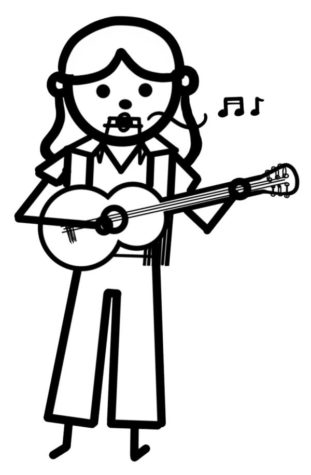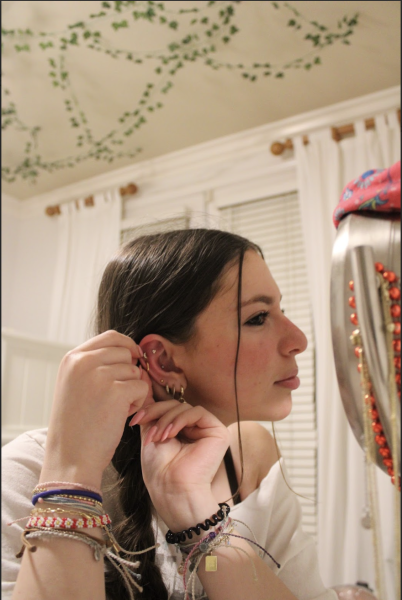Column: Sara’s Official Guide Through Music Genres: Rock with me Folks!
September 17, 2021

 When the mindfulness of folk music intersects with the instrumentation of rock, folk rock music is born.
When the mindfulness of folk music intersects with the instrumentation of rock, folk rock music is born.
Hinted at with its name, folk rock is the product of the fusion of folk music in America with the rock sound that was becoming increasingly popular during British Invasion. It normally centers its sound around an acoustic guitar but incorporates rock instruments (electric guitar, bass, drums) as well as bluegrass instruments (banjo and fiddle).
Some of the most popular artists associated with this genre are Simon & Garfunkel, Johnny Cash, and the Mamas & the Papas, but none had quite the impact that Bob Dylan had in the 1960s.
Dylan is considered one of the founding fathers of the folk rock genre. He grew up listening to the sounds of traditional folk music of the ’30s and ’40s and combined them with the rock sounds of the British Invasion, which was at its peak during Dylan’s introduction into the music industry.
There is a popular story attributed to the creation of folk rock music. It is believed that in Dylan’s performance at the Newport Folk Festival on July 25, 1965, he switched from acoustic guitar to electric and the folk rock genre was born.
Dylan’s experimentation with the otherwise conventional style of folk music sparked controversy, but inspired many bands such as the Mamas & the Papas; Crosby, Stills, Nash & Young; and perhaps the most notorious, the Byrds. This Los Angeles-based quintet took after the Beatles with their experimental harmonies and multiple No. 1 hits, and they essentially named this genre. Their song “Mr. Tambourine Man” peaked at No. 1 on the Billboard chart during June of 1965, when the U.S. music press first called a song “folk rock.”
As folk rock gained popularity in other countries, its underlying themes differed in each. The folk rock in America reflected the social unrest at the time of its peak as it featured themes of youth rebellion and political injustices. Songs like Barry McGuire’s “Eve of Destruction” and Simon & Garfunkel’s “The Sounds of Silence” are perfect examples of this.
Across the sea, folk rock in Britain stayed closer to traditional folk tones and contained some Celtic musical elements. The iconic “The House of the Rising Sun” by the Animals, a British band, is said to have influenced Dylan to experiment with electric in the first place. The Beatles eventually started to pick up folk influences which is most evident in their song “I’m a Loser.”
Modern folk rock is most often referred to as “indie-rock” with bands such as Mumford & Sons and the Lumineers representing it best. Although folk rock has never dominated the charts, it has surely dominated my heart and influenced music for years to come.








